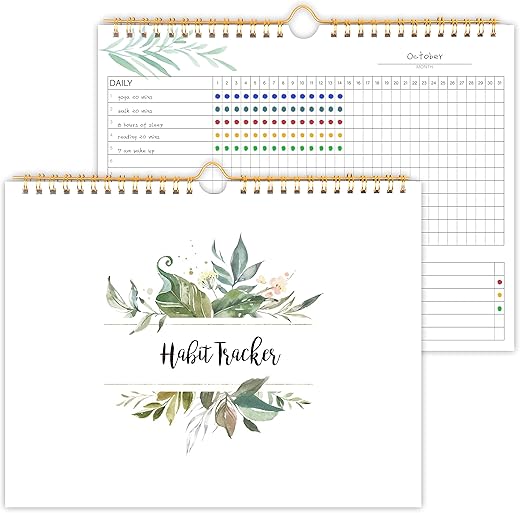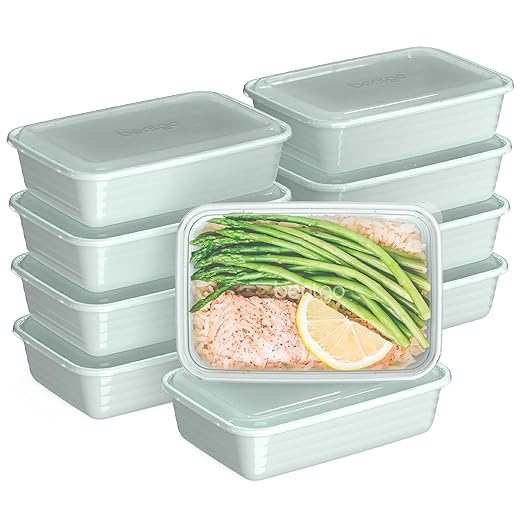Start Small, Live Big
Start SMALL and build habits that actually fit your life. These six practical, bite-sized steps help you move, sleep, eat, and manage stress without overwhelm. You’ll make real progress by choosing tiny, consistent actions that feel easily doable starting today.
What You'll Need
Create a Morning Routine That Sets Your Day
Why a 10-minute start beats an hour-long overhaul — and the one tiny habit that changes everything.Design a short, repeatable morning sequence you can finish in 15 minutes or less. Keep it simple so you actually do it every day.
Anchor the first action to waking (e.g., “when my alarm rings, I drink water”) so this tiny routine becomes automatic and makes healthier choices feel easier.
Move Your Body—In Ways You Actually Enjoy
Exercise should feel like a gift, not a chore. What if 20 minutes thrice weekly transformed your energy?Swap guilt for movement you like. Aim for a mix: brisk walking, short bodyweight strength sessions, and mobility work. Use 10–20 minute blocks—two or three times a day if needed.
Schedule movement like an appointment—set reminders and gradually increase intensity. Use incidental movement too—stand on calls, take stairs, park farther away. Include recovery: rest days and gentle stretching to avoid burnout.
Eat Real Food Without Obsessing Over Numbers
Ditch strict diets: eat meals that satisfy your brain and your body — here's the plate rule that simplifies everything.Use an easy plate model: half vegetables, one quarter lean protein, one quarter whole grains or starchy veg. Keep portions intuitive—no counting required.
Prep simple staples so meals assemble in minutes. Roast a sheet pan of mixed vegetables, cook a pot of brown rice or quinoa, and boil a dozen eggs. For example, toss roasted broccoli, quinoa, a sliced hard‑boiled egg, and a drizzle of olive oil for a quick lunch.
Learn a few go-to recipes and make smart swaps to cut calories without feeling deprived.
Focus on satiety and balance instead of short-term perfection.
Sleep Better—Small Wins That Add Up
Sleep is the overlooked superpower—try hacks that actually stick instead of one-size-fits-all rules.Start with two anchors: a consistent wake time and a wind‑down routine you actually follow. Dim screens 30–60 minutes before bed, lower lights, and do a calming ritual—read a chapter, do 6‑breath box breathing, or take a warm shower.
Keep your bedroom cool, dark, and quiet. If you lie awake, try a short pre‑sleep exercise: inhale for 4, hold 4, exhale 6, or do 5–10 minutes of progressive muscle relaxation (tense, release each muscle group).
Track sleep patterns for one week to spot habits you can change—late coffee, evening social media, or a heavy TV session—and tweak them.
Manage Stress with Tiny, Science-Backed Tools
You don't need a monk's retreat—three easy practices to lower stress and boost focus in minutes.Practice Box or 4‑7‑8 breathing for two minutes when you feel overwhelmed—try inhale 4, hold 4, exhale 8, repeat six times before a meeting to calm your nerves.
Pause for a two‑minute mindfulness check‑in midday: notice three breaths, scan your body, and name one thing you need to focus on next.
Move with brief breaks: stand, stretch, march in place, or walk 1–3 minutes every hour to release tension and reset posture.
Set boundaries by saying no to low‑value requests and schedule 10–15 minute buffers between tasks so you don’t run from thing to thing.
Connect with someone quickly—a short call or message can boost mood and remind you you’re not alone.
Make It Stick: Systems Over Willpower
Why habits fail — and how to stack tiny wins so healthy living becomes automatic.Design your environment for success: keep a water bottle on your desk, put a bowl of pre-cut fruit at eye level in the fridge, and leave your workout clothes by the door. For example, Alex left sneakers by the couch and now goes for an easy jog twice a week.
Use habit stacking—attach a new habit to an existing one. After you brush your teeth, do two stretches or a one-minute plank.
Track progress with a simple checklist. Cross off days, and celebrate small wins (a sticker, a 5‑minute pause, or a fun text to a friend).
Find accountability: message a buddy each morning, use a habit app, or schedule a weekly check‑in.
Reset with compassion when you slip: forgive yourself, pick one tiny next step, and restart—systems make the healthy choice the easy choice.
Your Simple Next Move
Pick one step to practice for two weeks. Once it feels natural, add the next. Small consistent changes win. Try it, notice the difference, and share your progress with us.









Question: how do you actually ‘eat real food without obsessing over numbers’? I feel like either I wing it and overeat or I track obsessively and get anxious. Any practical middle ground?
Great question, Tom. Try plate-based rules: half veggies, a quarter protein, a quarter carbs. No calorie counts needed. Also, learn to stop when comfortably satisfied (about 80%).
If you like numbers for a while, set a short trial (2 weeks) to learn portion sizes, then drop it. Numbers taught me what ‘a proper portion’ looks like and now I guess well enough.
I use that plate trick and it helped my anxiety around tracking. Also, batch-cooking simple meals makes it easier to pick balanced options when tired.
Short and sweet: this guide is realistic. 6 steps I can actually try. Thank you!
Same — I picked ‘move your body’ and did 10-minute walks after lunch. Feels manageable.
Thanks Emily — that was exactly the goal. If you try one step this week, which would it be?
Can someone give simple examples of the ‘tiny, science-backed tools’ for stress? I don’t want a 30-minute meditation, just things I can do at my desk during a 5-min break.
Sure — quick options: 1) 4-4-4 box breathing for 1–2 minutes, 2) 30-second body scan (focus attention from toes → head), 3) progressive muscle relax for each limb (10–20 seconds), 4) 60-second mindful walk (focus on feet).
I put on a 2-minute song and focus on my breath. Short, feels good, and gets me back to work more focused.
Nice, thanks all. I’ll try the 60-sec walk — sounds doable.
I do 60-second breathing between emails — feels like a mini-reset.
“Move your body — in ways you actually enjoy” = the only line I care about. I’ll never be a runner, so thanks for not making me feel bad about it. Still, fitting anything in is a hustle when you have 2 jobs.
Totally feel you. Dance in your kitchen for 10 minutes during dinner prep. Feels silly but counts and is actually fun.
Ben, that hustle is real. Micro-movements (5–10 min) and mixing activity into daily tasks really help when time is scarce. Even walking meetings or calf raises during calls add up.
I was skeptical at first — another ‘healthy living’ guide — but this one felt less preachy and more doable. Going to try stacking a tiny habit this week. If I fail, I’ll come complain here 😅
Pick something tiny, like 2 push-ups after brushing your teeth. Trust me, it turns into 10 sometimes.
Alright — 2 push-ups after brushing. If I do it for a week, expect a success post. If not, I’ll be dramatic about failing here 😂
We accept complaints and celebrate attempts 😊. If you want, tell us the tiny habit you pick and we’ll cheer you on (or give tips).
Sleep tips in section 4 were gold. I implemented a 30-min ‘wind down’ consisting of light reading, no screens, and chamomile tea. It’s been two weeks and my sleep latency dropped from 60+ minutes to under 20. Small wins for the win!
Also, the ‘no obsessive tracking’ food mindset has helped reduce stress around meals. I actually enjoy eating more now instead of calculating every macro.
Thanks for writing practical stuff, not extreme rules. 😊
Love hearing this, Priya — your wind-down routine is exactly the kind of low-friction habit change we hoped people would try. Congrats on the progress!
That’s so encouraging. How do you manage nights when you inevitably check your phone? I keep falling into that trap.
Phone distance is a simple but effective nudge. Some people also use grayscale mode to make the screen less tempting at night.
Ethan — I put my phone in another room or use a simple alarm clock so I don’t rely on it. Also, I set a 15-min ‘buffer’ earlier in the evening to do what I need online, then close the browser.
Loved the ‘Start Small, Live Big’ idea. I tried adding just a 5-minute stretch + water first thing and it actually sets a different tone for my whole day. Not dramatic, but steady progress — which I need.
So glad that worked for you, Laura! Small anchors like that are surprisingly powerful. If you want, try pairing it with a one-minute breathing exercise after the stretch to calm your nervous system.
Same here — started with water + quick stretch. Took me 3 weeks before it felt ‘normal.’ Stick with it 👍
Curious — do you do the stretch before coffee or after? I always feel sluggish until caffeine hits 😅
Okay, real talk: the stress tools made me giggle at first (tiny breathing? really?). But then I tried box breathing before a meeting and it calmed me down instantly. Who knew 4 counts could be so powerful 😂
I’m saving the ‘progressive muscle’ idea. Also, anyone else use humor as a stress tool? I make silly faces in the mirror sometimes 😂
I do the 4-4-4 thing in my car between errands. People must think I’m weird but it helps!
Box breathing is deceptively simple — science loves it for a reason. Also try a quick body scan (30 seconds) if you need a midday reset.
I started doing progressive muscle relaxation at night — tiny tool, huge payoff for me.